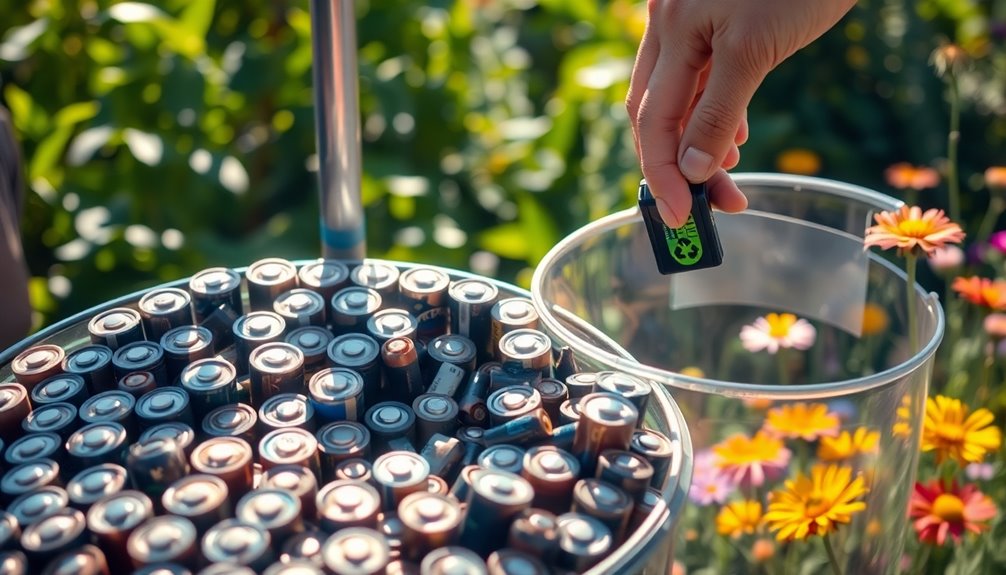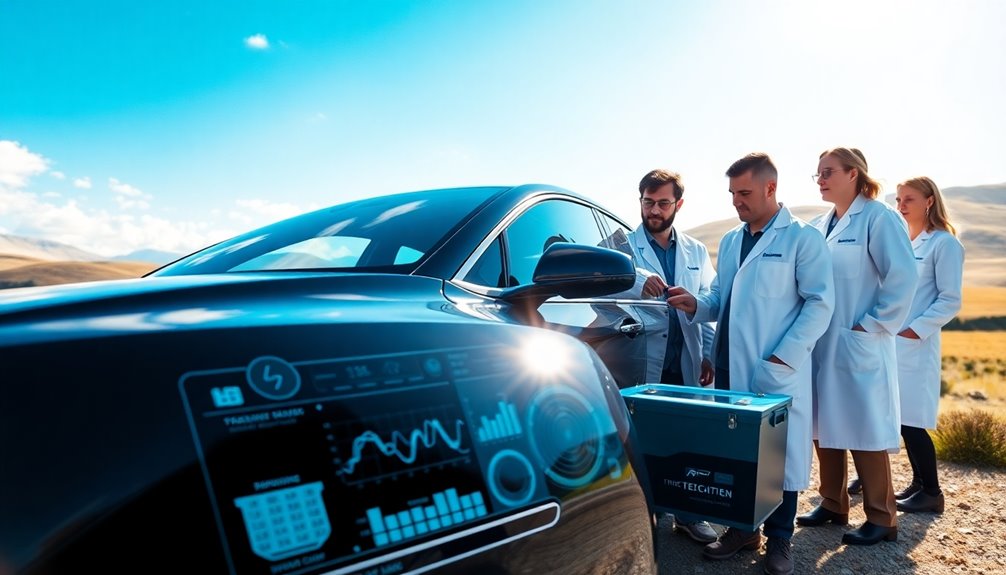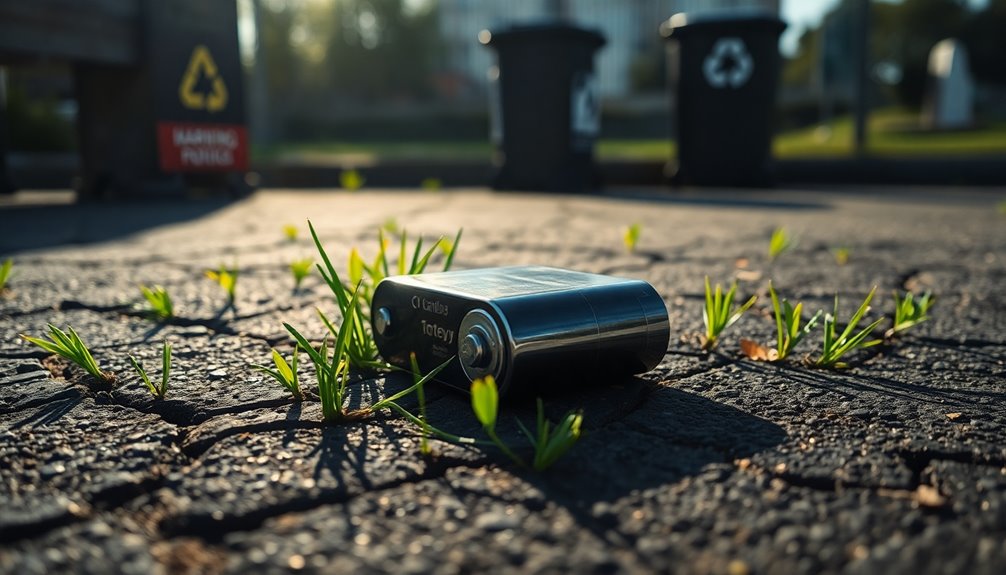Tesla batteries can last between 300,000 to 500,000 miles, making them a top choice for durability. You might notice a 5% capacity loss after about 50,000 miles and around 12% after 200,000 miles. Many owners report their batteries still function well past 200,000 miles, and the Model S can even reach over 1 million miles. With proper care, like maintaining charge levels and avoiding extreme temperatures, you can maximize battery life. Knowing these details helps you understand what to expect and how to care for your battery effectively, and there's even more to uncover about Tesla's battery technology.
Key Takeaways
- Tesla batteries typically lose around 5% capacity after 50,000 miles and about 12% after 200,000 miles.
- Many Tesla owners report their batteries exceeding 100,000 miles with minimal degradation.
- The warranty guarantees 70-80% capacity retention for 8 years or 100,000 to 150,000 miles, depending on the model.
- Proper maintenance, like keeping charge levels between 20% and 80%, can enhance battery longevity.
- Future innovations, such as "million-mile batteries," aim to further extend battery lifespan and sustainability.
Battery Longevity Overview

When you drive a Tesla, you'll find that battery longevity is a key feature.
Tesla batteries typically lose about 5% of their capacity within the first 50,000 miles, with an average degradation of around 12% after 200,000 miles.
Many Tesla owners report their batteries lasting well over 100,000 miles, especially with models like the Model S achieving over a million miles when cared for properly.
Tesla's warranty covers battery performance for eight years or 100,000 to 150,000 miles, ensuring you retain 70-80% of the original battery capacity.
Factors like driving habits and charging practices play a significant role in battery longevity, so keeping charge levels between 20% and 80% can enhance your battery's lifespan and overall performance.
Understanding Battery Degradation
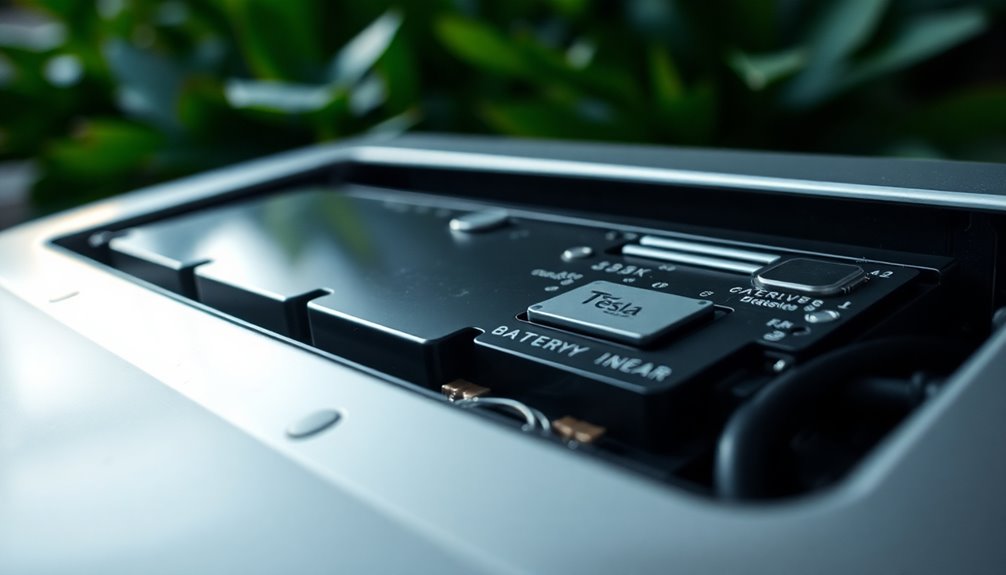
Battery degradation is a natural process that affects all lithium-ion batteries, including those used in Tesla vehicles.
Typically, you might see an initial capacity loss of about 5% after 50,000 miles, with average degradation reaching around 12% after 200,000 miles.
However, many Tesla owners report losses ranging from 10% to 25%, indicating that your battery can maintain a significant amount of its original capacity over time.
Factors like ambient temperature, driving habits, and charging practices play an essential role in this degradation.
To help manage battery health, Tesla recommends keeping your charging levels between 20% and 80%.
With proper care, your electric vehicle can last well beyond 100,000 miles, proving the effectiveness of Tesla's battery management system.
Tesla Warranty Insights

When you own a Tesla, understanding the warranty coverage can provide peace of mind about your battery's longevity.
The warranty outlines specific degradation thresholds and replacement cost considerations, so you know what to expect.
Let's break down these important details to help you make informed decisions.
Warranty Coverage Details
Tesla offers a robust warranty for its batteries, ensuring peace of mind for owners.
The battery warranty varies by model: the Model S and Model X are covered for eight years or 150,000 miles, while the Model 3 RWD has an eight-year or 100,000-mile warranty.
The Model Y and Model 3 Long Range/Performance enjoy coverage for eight years or 120,000 miles.
Tesla guarantees at least 70-80% capacity retention during this period, protecting you against significant degradation. If your battery loses 30% or more capacity, you can file a warranty claim.
Additionally, California law extends this warranty to 10 years or 150,000 miles, giving owners in the state extra assurance.
Degradation Thresholds Explained
While understanding your vehicle's performance is essential, knowing the degradation thresholds of Tesla's batteries can greatly impact your ownership experience.
Tesla's warranty guarantees that your battery will retain at least 70-80% of its original capacity for specified mileage: 150,000 miles for Model S and X, and 100,000 miles for Model 3 RWD. A 30% degradation threshold means any loss below this is considered normal wear, not eligible for warranty claims.
Typically, you can expect annual capacity degradation of 1-2%, averaging around 12% after 200,000 miles. Tesla's advanced battery management system helps optimize performance and minimize degradation, making it vital to monitor your battery health as you approach warranty limits, especially considering replacement costs can range from $10,000 to $20,000.
Replacement Cost Considerations
How do you weigh the potential costs of battery replacement against the warranty coverage? Understanding the details of Tesla's warranty can help you make informed decisions about your investment. Here are some key points to take into account:
- Warranty Duration: Covers 8 years and up to 150,000 miles, depending on the model.
- Degradation Threshold: Warranty claims accepted for over 30% battery degradation.
- Replacement Costs: Typically range from $10,000 to $20,000, impacting your budget.
- Impact on Driving Range: Battery performance affects your overall driving experience, especially in models like the Model S.
Being aware of these factors can help you navigate replacement costs and Tesla battery life effectively.
Real-World Battery Performance

When it comes to real-world battery performance, you'll find that Tesla batteries often exceed expectations.
Many owners report impressive mileage, with some vehicles still running strong at nearly 250,000 miles.
Understanding factors like driving habits and charging practices can help you maximize your battery's longevity.
Real-World Mileage Insights
As you drive a Tesla, you might be surprised to learn that many owners report their batteries lasting well beyond 100,000 miles with minimal degradation.
Real-world data shows impressive battery lifespan statistics, especially for the Model S. Here are some key insights:
- Owners often achieve over 200,000 miles on their original battery with only about 12% capacity loss.
- Initial degradation of around 5% typically happens within the first 50,000 miles.
- Batteries can maintain 70% to 80% of their capacity after 8 years.
- Charging habits, like keeping levels between 20% and 80%, markedly impact longevity.
With proper care, your Tesla's battery can perform exceptionally well over time.
Longevity Case Studies
Tesla's battery technology has proven its resilience, with numerous case studies illustrating the impressive longevity of their batteries in real-world conditions.
For instance, Hansjoerg von Gemmingen-Hornberg's Model S surpassed a staggering million miles, showcasing how proper maintenance can greatly extend battery lifespan.
Typically, Tesla batteries experience only about 12% capacity degradation after 200,000 miles, and many owners report reaching over 300,000 miles without major issues.
The original Model S battery remains operational at nearly 248,000 miles, even after frequent supercharging, thanks to advanced battery management systems.
Studies show that annual capacity degradation averages just 1-2%, reinforcing the idea that with regular care and smart charging practices, you can enjoy long-lasting performance from your Tesla batteries.
Performance Under Varied Conditions
Although various factors can influence battery performance, real-world data demonstrates that Tesla batteries, especially in the Model S, often exceed expectations.
Here are some key points about their performance under varied conditions:
- Longevity: Many Tesla batteries last over 300,000 miles, with minimal degradation even after 500,000 miles.
- Environmental Impact: Extreme temperatures and hilly terrains can lead to increased energy consumption and battery degradation.
- Charging Recommendations: Keeping your battery charged between 20% and 80% helps extend its lifespan.
- Advanced Systems: Tesla's battery management systems optimize performance and greatly reduce degradation.
These factors illustrate the impressive Tesla battery lifespan and how you can maximize your electric car's efficiency despite environmental challenges.
Factors Influencing Battery Life
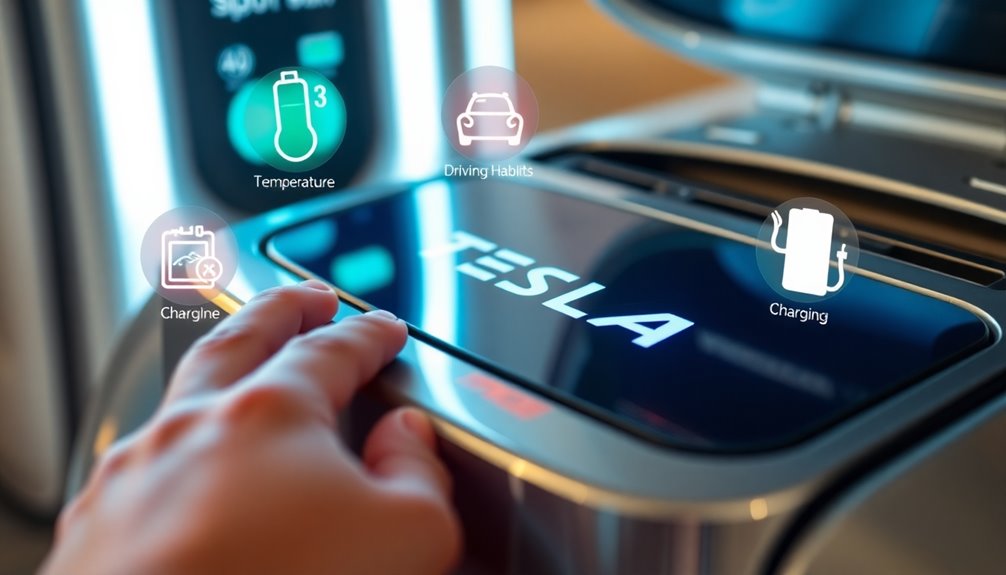
Battery life can be considerably influenced by several key factors that every Tesla owner should consider.
First, battery degradation is accelerated by deep discharges and frequent charging cycles, especially with fast charging at Supercharger stations. This rapid charging can lead to wear and tear that shortens battery lifespan.
Additionally, temperature effects play a significant role; extreme heat or cold can exacerbate degradation rates.
Your driving habits also matter—aggressive driving and high speeds increase energy consumption and generate excess heat, further impacting battery health.
Finally, the efficiency of the battery management system is essential for optimizing performance and minimizing degradation over time, ensuring you get the most out of your Tesla's battery.
Best Practices for Longevity

To guarantee your Tesla's battery lasts as long as possible, adopting a few best practices can make a significant difference.
Here are some key tips for longevity:
- Maintain Charging Levels: Keep your battery charged between 20% and 80% to protect its health.
- Opt for Home Charging: Use the Tesla Wall Connector instead of frequent Supercharging to extend battery life.
- Monitor Driving Habits: Drive smoothly and avoid aggressive acceleration to reduce wear on the battery.
- Manage Temperature: Keep your battery cool by avoiding extreme temperatures and utilizing Tesla's cooling systems.
Future of Tesla Battery Technology

As Tesla continues to innovate, the future of its battery technology looks promising, with advancements aimed at enhancing both lifespan and efficiency.
You can expect the emergence of "million-mile batteries" that may redefine battery life, allowing you to drive longer without worrying about replacements.
Tesla's integration of advanced battery management systems will optimize performance and reduce degradation over time.
Additionally, the shift to lithium iron phosphate (LFP) chemistry promises improved longevity and thermal stability, ensuring your vehicle remains durable.
Sustainability is also a focus, with ongoing research in battery recycling to minimize environmental impacts and lower replacement costs.
Altogether, these developments signal a bright future for Tesla battery technology that prioritizes longevity and eco-friendliness.
Frequently Asked Questions
How Long Do Tesla Batteries Actually Last?
When you ask how long Tesla batteries actually last, you'll find they're engineered for impressive longevity.
Most batteries can last between 300,000 to 500,000 miles, with minimal degradation over time.
After around 200,000 miles, you might only see about a 12% decrease in capacity.
Plus, Tesla's warranty guarantees you've got protection for eight years or a certain mileage, so you can drive confidently knowing your battery's performance will hold up well.
What Happens After 8 Years of a Tesla Battery?
You might worry that after 8 years, your Tesla battery's performance will drop considerably, but that's often not the case.
Once the 8-year warranty expires, you can still expect your battery to retain about 70-80% of its capacity.
Many owners report minimal degradation, and batteries can last well beyond 300,000 miles.
While replacement costs may arise, many find their batteries continue to perform adequately for years, easing concerns about immediate replacements.
Why Is Tesla Battery Draining so Quickly?
If you find your Tesla battery draining quickly, several factors could be at play.
Extreme temperatures, both hot and cold, can accelerate degradation. Aggressive driving habits, like rapid acceleration, also consume more energy.
Frequent Supercharging and charging to full capacity may wear down the battery faster than recommended.
Finally, driving in hilly areas puts extra strain on your battery.
Keeping these factors in mind can help you manage your battery's performance better.
How Often Do Tesla Batteries Fail?
Imagine a sturdy oak tree, standing tall against the storm—this symbolizes Tesla batteries.
They rarely fail, with only a few reports of module issues among millions sold. Most owners like you experience minimal degradation, around 10-25%, and the warranty backs up your investment, ensuring at least 70-80% capacity retention.
While sudden failures can happen, they're infrequent.
Conclusion
In the world of electric vehicles, Tesla batteries are like fine wine—they improve with age when cared for properly. With a solid understanding of battery longevity, you can maximize your investment and enjoy the thrill of driving a Tesla for years to come. By implementing best practices and staying informed about warranty insights, you'll guarantee your battery performs at its best, giving you peace of mind as you cruise toward the future of sustainable driving.




